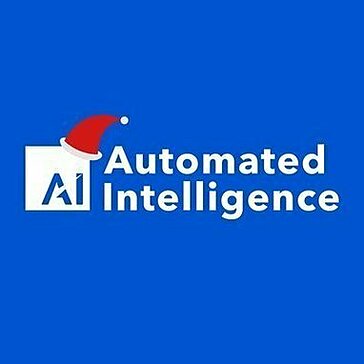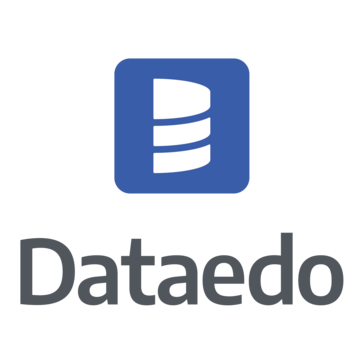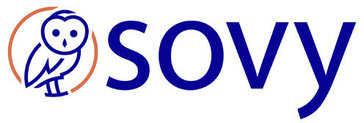4.25
Securiti Review
Discover our in-depth Securiti review. Explore features, pricing, security, and support to assess its value for money and updates. See if it’s right for you!

Comprehensive overview and target audience
Securiti presents itself as a unified data intelligence, privacy, and security platform. Its core mission is to enable organizations to safely harness the power of their data while meeting complex compliance obligations globally. The platform integrates several modules covering data discovery, privacy automation, data security posture management, and governance. This comprehensive approach aims to simplify what is often a fragmented landscape of tools, offering a single pane of glass for data visibility and control.
The primary target audience for Securiti includes medium to large enterprises, particularly those operating in heavily regulated industries like finance, healthcare, technology, and retail. Essentially, any organization dealing with significant amounts of sensitive customer or employee data across diverse systems can benefit. Key personnel who leverage Securiti typically include:
- Chief Privacy Officers CPOs seeking automated compliance workflows.
- Chief Information Security Officers CISOs needing enhanced data security posture.
- Data Protection Officers DPOs managing data subject requests DSRs efficiently.
- IT and Cloud Security Architects responsible for securing data across hybrid environments.
- Compliance and Governance teams ensuring adherence to regulations like GDPR, CCPA, HIPAA, and more.
Evaluating Securiti value for money requires looking beyond simple subscription costs. A thorough Securiti pricing comparison should factor in the potential reduction in risk, avoidance of hefty non compliance fines, and operational efficiencies gained through automation. While specific pricing requires direct engagement, the platform’s extensive feature set aims to justify the investment. Core Securiti security features provide deep insights into data location, usage, and risk exposure, enabling proactive protection. The platform is not static; frequent Securiti updates and new features reflect the dynamic nature of data privacy and security landscapes, ensuring customers stay ahead of emerging requirements and threats. Access to comprehensive Securiti support and training resources, including expert guidance and detailed documentation, further contributes to the overall value proposition, facilitating faster deployment and maximizing user proficiency.
User experience and functional capabilities
Delving into the practical application of Securiti, the user experience is a critical factor. Securiti user experience insights generally point towards a comprehensive, if initially complex, interface. The platform consolidates a vast array of functions into a single dashboard, which is advantageous for centralized control but can present a learning curve. Navigation relies on a structured menu system designed to guide users through different modules like data discovery, privacy management, and security posture. Initial onboarding is supported by resources aiming to flatten this curve, making the powerful features accessible.
Functionally, Securiti offers deep capabilities. Understanding How to use Securiti effectively involves leveraging its automation features. For instance, automated data discovery scans across diverse data stores, both cloud and on premises, identifying and classifying sensitive information. Managing Data Subject Requests DSRs is streamlined through automated workflows that handle intake, verification, data retrieval, and response generation. Risk assessment and compliance reporting are also core functionalities, providing actionable insights derived from continuous monitoring. While powerful, mastering these functions requires familiarity with the platform’s logic and configuration options.
The implementation process is a significant consideration. While Securiti provides documentation and support, deploying such a comprehensive platform often requires careful planning and dedicated resources. A typical Securiti implementation guide would outline steps including initial environment assessment, connector configuration for data sources, policy setup, and user training. Success hinges on clear objectives and cross functional collaboration between privacy, security, and IT teams. The platform’s flexibility allows for phased rollouts, starting with core modules and expanding over time.
Despite its strengths, users may encounter challenges. Common problems with Securiti can include the initial complexity of configuration, ensuring accurate data source connection across intricate IT landscapes, and fine tuning automation rules to specific organizational contexts. False positives in data discovery or managing exceptions in DSR workflows sometimes require manual intervention and refinement of policies. Adapting internal processes to fully leverage the platform’s automation potential can also be an organizational hurdle, requiring dedicated change management efforts.
A key strength lies in Integrating Securiti with other tools. The platform is designed with API first principles, facilitating connections with a wide ecosystem of IT and security solutions. This includes identity providers, ticketing systems like ServiceNow or Jira for DSR workflow management, SIEM systems for enhanced threat detection, and various cloud platforms. This integration capability enhances existing investments and ensures Securiti operates seamlessly within the broader enterprise architecture, providing a unified view rather than another isolated silo. Effective integration maximizes data visibility and control.
Securiti continuously evolves; Securiti updates and new features are released regularly to address emerging threats, new regulations, and customer feedback. Staying informed about these updates is crucial for maximizing platform value. Best practices for using Securiti effectively include: maintaining accurate data inventories through regular scans; establishing clear policies for data handling and access; actively monitoring risk dashboards; providing ongoing user training; and regularly reviewing and optimizing automated workflows. Proactive engagement with Securiti support and community resources also helps overcome challenges and leverage new capabilities efficiently, ensuring long term success and compliance.
Who should be using Securiti
Securiti is specifically designed for organizations navigating the complexities of modern data environments. Primarily, medium to large enterprises that handle significant volumes of sensitive personal or business data will find it indispensable. This is especially true for companies operating within heavily regulated sectors such as finance, healthcare, technology, and retail where compliance obligations are stringent and penalties for failure are severe.
The platform is most beneficial for specific roles within these organizations. Chief Privacy Officers CPOs and Data Protection Officers DPOs should consider Securiti for automating demanding tasks like Data Subject Request fulfillment and maintaining compliance records. Chief Information Security Officers CISOs will value its capabilities in enhancing data security posture management across diverse systems. IT and Cloud Security Architects tasked with securing data spread across multi cloud and on premises infrastructures should also evaluate the platform. Furthermore, Compliance and Governance teams responsible for ensuring adherence to regulations like GDPR, CCPA, and HIPAA will find its unified approach highly effective.
A typical Securiti use case scenario involves a global company needing a single solution to discover, classify, and protect sensitive data across dozens of applications and databases while simultaneously managing privacy requests from customers worldwide. Organizations facing fragmented toolsets for privacy, security, and governance can achieve significant consolidation and efficiency gains. Companies looking to move beyond manual processes and embrace automation for data privacy and security operations are ideal candidates.
Ultimately, Securiti is best suited for organizations committed to robust data stewardship. Those ready to invest time in configuration and adopt the best practices for Securiti, including establishing clear data handling policies, ensuring cross functional collaboration, and leveraging its full automation potential, will realize the greatest return on investment. It is built for businesses seeking proactive, unified control over their data landscape in an increasingly complex world.
Unique Features offered by Securiti
Securiti distinguishes itself through extensive customization options and unique features designed to adapt to diverse organizational needs and complex data environments. The platform is not a rigid, one size fits all solution; instead, it offers significant flexibility, allowing businesses to tailor its functionalities. This adaptability is crucial for Customizing Securiti for business growth, ensuring the platform evolves alongside the organization’s data landscape and strategic objectives. You can configure policies, workflows, and reporting dashboards to align precisely with internal processes and specific regulatory requirements, moving beyond generic templates.
Several unique features underpin Securiti’s value proposition:
- Its AI powered Data Command Center provides a unified view of sensitive data across hybrid multi cloud and on premises systems, enabling centralized intelligence and control which is often lacking in point solutions.
- Automated Data Subject Rights DSR fulfillment uses robotic automation to handle requests end to end, significantly reducing manual effort and ensuring timely compliance.
- Sensitive Data Intelligence SDI leverages AI to discover, classify, and catalog sensitive data with high accuracy, providing deep context around data usage and risk.
- Data Security Posture Management DSPM capabilities offer continuous monitoring and remediation guidance for data related security risks across the infrastructure.
While Securiti primarily targets medium to large enterprises due to its comprehensive nature, its modular design and scalability offer some pathways for growing companies. Smaller organizations with significant data risks or compliance needs might leverage specific modules. However, potential users should note that the full suite’s complexity might be more than what typical Securiti for small businesses scenarios require without dedicated resources. The platform’s strength lies in its ability to scale up, supporting complex global operations effectively.
A cornerstone of its flexibility is Integrating Securiti with other tools. Built with an API first architecture, it seamlessly connects with existing IT and security ecosystems, including identity management systems, SIEM platforms, ticketing systems like ServiceNow, and cloud infrastructure providers. This ensures Securiti enhances, rather than duplicates, existing investments, creating a cohesive data security and privacy framework across the entire technology stack. These customization options and unique, integrated features position Securiti as a powerful ally in navigating today’s intricate data challenges.
Pain points that Securiti will help you solve
Organizations today grapple with numerous data related challenges that create significant operational friction, compliance risks, and security vulnerabilities. Securiti is engineered to directly address these critical pain points, transforming how businesses manage and protect their most valuable asset: data.
Many companies struggle with a fundamental lack of visibility. Sensitive data is often scattered across complex hybrid cloud environments, SaaS applications, and legacy on premises systems, making it incredibly difficult to know where it resides, who accesses it, and how it is used. Securiti solves this by providing comprehensive data discovery and intelligence, offering a unified view across your entire data landscape.
Navigating the intricate web of global privacy regulations like GDPR, CCPA, and others is another major hurdle. Ensuring continuous compliance and efficiently handling Data Subject Requests DSRs manually is often unsustainable, resource intensive, and prone to errors. Securiti alleviates this burden through:
- Automated compliance workflows tailored to various regulations.
- Robotic automation for end to end DSR fulfillment, reducing response times and manual effort significantly.
- Streamlined consent management and breach notification processes.
Furthermore, businesses frequently suffer from tool sprawl, using disparate point solutions for privacy, security, and governance. This fragmentation creates operational silos, increases complexity, and leaves gaps in protection. Securiti provides a unified platform, consolidating these functions into a single interface. This approach simplifies management and enhances overall data posture. Successfully “Integrating Securiti with other tools” within your existing ecosystem is key, allowing it to break down these silos rather than becoming another isolated system.
Security teams are often overwhelmed trying to maintain a consistent security posture for data across diverse infrastructures. Securiti’s Data Security Posture Management DSPM capabilities provide continuous monitoring, risk assessment, and remediation guidance, helping proactively address vulnerabilities before they can be exploited. For companies focused on expansion, “Customizing Securiti for business growth” ensures that data governance and security practices can scale effectively alongside increasing data volumes and complexity. While ideal for larger enterprises facing these intense challenges, the core issues addressed resonate across “Securiti for different businesses sizes”, particularly those with high regulatory exposure or complex data environments requiring robust, automated controls.
Scalability for business growth
Business growth inevitably brings increased data volume, variety, and velocity. Managing this expanding data footprint while maintaining compliance and security is a significant challenge. Securiti is architected from the ground up to address this specific need, providing a robust foundation that scales seamlessly with your organization’s trajectory. Its cloud native design handles growing data stores across diverse environments, from on premises systems to multi cloud deployments, without compromising performance. This ensures that your data governance capabilities do not lag behind your operational expansion.
The platform’s modular approach is fundamental to its scalability. Organizations can implement core functionalities initially and add further modules as their needs evolve and complexity increases. This phased approach supports managed growth. Moreover, Securiti’s reliance on automation for critical tasks like data discovery, classification, and Data Subject Request fulfillment is inherently scalable. Automated workflows handle larger volumes efficiently, preventing bottlenecks and reducing the need for proportional increases in manual resources. This intelligent automation is key to sustainable growth.
Effective scaling requires adaptation. This is where customizing the platform becomes vital. Properly configuring policies, reports, and automated processes ensures that Securiti remains aligned with evolving business requirements and regulatory landscapes. This adaptability through configuration is central to Customizing Securiti for business growth. It allows the platform to support new business units, geographical expansions, and changing data types. Ultimately, Customizing Securiti for business scalability means leveraging its flexible architecture and automation to ensure that data privacy and security controls enable, rather than hinder, your company’s ambitions.
Final Verdict about Securiti
Securiti emerges as a powerful and comprehensive platform designed to tackle the intricate challenges of modern data privacy, security, and governance. It effectively consolidates numerous critical functions into a unified system, offering organizations a single source of truth for understanding and controlling their data across diverse environments. Its core strengths lie in its AI driven sensitive data intelligence, robust automation capabilities, particularly for fulfilling Data Subject Requests, and its integrated approach to Data Security Posture Management. For businesses drowning in tool sprawl and struggling with regulatory complexity, Securiti presents a compelling solution.
The platform excels at addressing key pain points including:
Lack of data visibility across hybrid and multi cloud infrastructures.
The overwhelming burden of manual compliance processes for regulations like GDPR and CCPA.
Fragmented security and privacy toolsets leading to operational inefficiencies and gaps in protection.
Maintaining consistent data security posture in complex IT landscapes.
However, potential adopters must recognize that harnessing Securiti’s full potential requires commitment. The platform’s comprehensiveness translates into an initial learning curve and necessitates careful planning for implementation and configuration. Dedicated resources and cross functional collaboration are crucial for success. It is best suited for medium to large enterprises, particularly those in regulated industries facing significant data complexity and compliance obligations. While highly customizable and scalable, its extensive nature might be more than required for smaller businesses with simpler data environments.
Our Final verdict on Securiti is overwhelmingly positive for its target audience. It stands out as a leader in the unified data controls market, offering significant value through risk reduction, operational efficiency, and enhanced data trust. For organizations ready to invest in a strategic platform to master their data landscape and meet stringent regulatory demands proactively, Securiti is an excellent choice, providing the sophisticated automation and intelligence needed in today’s data driven world.
Advantage
Disadvantage
Unified platform simplifies data privacy & security
Automates sensitive data discovery and classification
Streamlines compliance for global privacy regulations
Efficiently manages data subject access requests
Provides deep insights with AI-powered intelligence
Disadvantage
Complex initial setup and configuration
Potentially high cost for smaller organizations
Requires dedicated technical expertise to manage
Steep learning curve for some advanced features
Integration challenges with certain legacy systems.
Rating
Privacy Center Essentials
$9000 per Year Paid Yearly
- DSR Automation
- Privacy Notices
- Consent Management
- Cookie Consent
- Universal Preference Management
Privacy Center Pro
$18000 per Year Paid Yearly
- All features in Essentials+
- Multi-regulation support
- Multi-language support
- Assessment Automation
- Vendor Assessment Management
Data Security Cloud Essentials
$18000 per Year Paid Yearly
- Data Discovery
- Classification and Cataloging
- Access Intelligence
- Data Flow Mapping
Data Security Cloud Pro
$36000 per Year Paid Yearly
- All features in Essentials+
- Remediation workflows
- Data risk scoring
- Policy enforcement
Data Governance Cloud Pro
$18000 per Year Paid Yearly
- Automated Data Catalog
- Data Quality Management
- Data Access Governance
- Stewardship Workflows
AI Governance Cloud Pro
$18000 per Year Paid Yearly
- AI Discovery and Catalog
- AI Risk Ratings
- AI Policy Management
- AI Usage Monitoring
Product Support
Web Based
Windows
Mac OS
Linux
Android
iOS
Phone Support
Email/Help Desk
AI Chat Bot
Live Support
24/7 Support
Forum & Community
Knowledge Base
Live Online
Documentation
Videos
In Person
Webinars
Company: Securiti.ai
Email: info@securiti.ai
Address:
2005 Concourse Dr, San Jose, CA 95131, USAPhone: #ERROR!
Implementation
Web Based
Windows
Mac OS
Linux
Android
iOS
Support
Phone Support
Email/Help Desk
AI Chat Bot
Live Support
24/7 Support
Forum & Community
Knowledge Base
Training
Live Online
Documentation
Videos
In Person
Webinars
Group text
Company: Securiti.ai
Email: info@securiti.ai
Address:
2005 Concourse Dr, San Jose, CA 95131, USA
Phone: #ERROR!
Alternative Products
Frequently Asked Questions
What exactly is Securiti Review?
Securiti is a comprehensive, AI-powered platform designed to unify data security, privacy, governance, and compliance controls across complex, hybrid multi-cloud environments, providing organizations with visibility and automation to manage sensitive data obligations effectively.
Who is Securiti Review for?
Securiti is ideal for organizations of all sizes, particularly those handling sensitive customer or employee data, operating in regulated industries (like finance, healthcare), or needing to comply with global privacy regulations such as GDPR, CCPA/CPRA, LGPD, and others; it serves privacy professionals, security teams, compliance officers, and IT departments aiming to automate and streamline data management.
How can Securiti help me?
Securiti can help your organization by automating the discovery and classification of sensitive data across all your systems, streamlining the fulfillment of Data Subject Requests (DSRs), managing user consent, assessing and mitigating data risks, enforcing security policies, and ultimately simplifying the path to achieving and maintaining regulatory compliance, thereby reducing potential fines and reputational damage.
What are the key features of Securiti Review?
Key features include AI-driven data discovery and classification across diverse data stores, automated Data Subject Request (DSR/SAR) fulfillment workflows, comprehensive consent lifecycle management, data breach management and notification, sensitive data intelligence and risk scoring, a unified data governance catalog, and automated policy enforcement for security and privacy controls.
How does Securiti Review integrate with existing systems?
Securiti boasts a wide range of pre-built connectors and robust APIs, enabling seamless integration with hundreds of cloud services (like AWS, Azure, GCP), SaaS applications (e.g., Salesforce, Microsoft 365, Slack), databases (SQL, NoSQL), data warehouses, data lakes, and even on-premises systems, allowing it to operate across your entire data landscape.
What kind of support is available?
Securiti typically offers various levels of support, including access to comprehensive online documentation, a knowledge base, community forums, and standard customer support channels (email/ticketing); depending on the subscription tier, premium or dedicated support options, including a customer success manager, may also be available.
How much does Securiti Review cost?
Securiti’s pricing is typically customized based on factors such as the specific modules required, the volume of data sources connected, the number of data subjects or records processed, and the desired level of support; prospective customers generally need to contact Securiti’s sales team for a personalized quote tailored to their specific requirements.
Is Securiti worth it?
For organizations grappling with complex data privacy and security obligations, Securiti often represents a worthwhile investment; its ability to automate critical, time-consuming tasks, reduce compliance risks, provide unified visibility, and scale with data growth can deliver significant ROI compared to manual processes or point solutions, making it a strong contender for simplifying data governance and security, though the value ultimately hinges on your specific needs and regulatory exposure.








